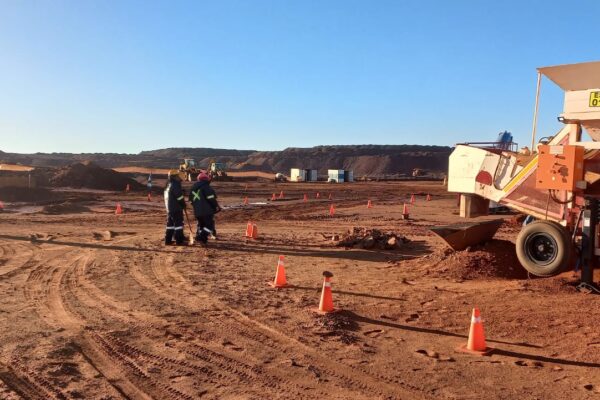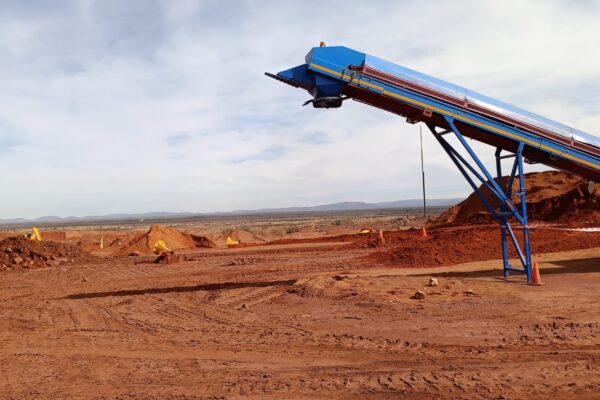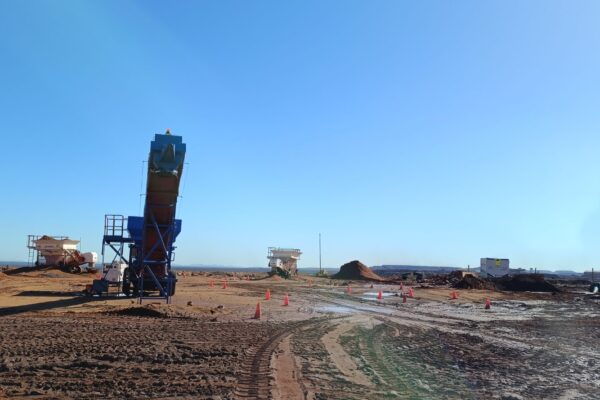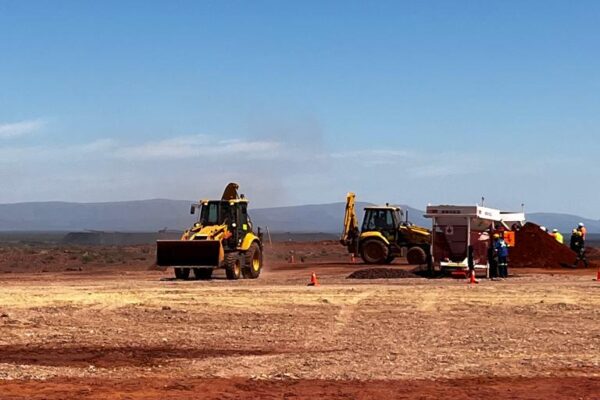Grouting is typically called for when the roof of a void collapses, or a sink hole or depression forms producing deformation of the ground surface or when pre-construction site testing uncovers such potential defects. The gradual deterioration of the void, usually over a period of years, most often appears as cone shaped depression, or hole at the surface which can result in damage to buildings, utilities, and roads.
Voids can form under a variety of conditions both natural and manmade. Trash and rubbish buried during construction will produce a void as it decomposes. If the trash pit is located under a concrete slab, building footer or foundation structural damage will often result from the subsidence. Sanitary and storm sewer pipes breaking will allow fill materials to carried away producing underground voids.
Damage to structures from void formation may be minimal to severe. These damages may include cracking in foundation walls and floor slabs, cracking of brick veneer, vertical displacement of the structure with severe tilting an inability to properly open and close doors and windows. Under extreme instances, complete structural failures can occur.
Filling of the void is conducted in one of several ways depending upon a variety of factors including location of the water table, the size of the cavity, its proximity to the surface and location in relation to structures.
One common and simple technique used to stabilize the subsurface and prevent subsidence is using cement based Portland cement or chemical grouts and foams to fill the cavity below. This method employs the use of pneumatic or drilling equipment to install pipes that connect the surface to the void below. The pipes act as conduits to the subsurface void allowing grout to be installed. Grout pipes can differ from sizes, depending on grout mixture and placement volume desired. Once the grout pipe or pipes are in place it is a simple matter to fill the cavity. With the use of shut off valves and pressure gauges it is possible to determine when the cavity has been filled. Once the cavity has been filed the pumps and valves are turned off and the grout allowed to cure.
Khumani Cavity Fill
The fill of the cavity with capacity of 83,300 m3.
The project consists of +-52 000 Cubes of dry sand fill and +-30 000 Cubes of a 3-5 mPa grout mix. However, due to the spread of the dry material that is better than anticipated, the possibility has been explored to fill the cavity with more dry sand material. This is something that has not been done in this area before on Khumani mine.
Production strategy:
The fill of the cavity is done by stockpiling wind-blown dry sand next to hoppers/conveyors and then by loading the conveyors with TLB’s the soil will be deposited trough borehole pipes into the cavity and various point within the cavity. These borehole pipe will be key to the effectivity of the sand fill as we have identified that the material deposited in the one bore hole will affect the capacity of the next hole. Therefore, deposition strategy is important to ensure the maximum fill at the most accessible points can be achieved.
Total Contract value Excl Vat: R 41 344 286.58
Raising of Garden Route Dam
The main contract was to construct the new raised dam wall and spillway of the Garden Route Dam.
Esor Constructions was sub-contracted to drill through all strata including concrete to perform water pressure tests and do pressure grouting where needed.
The Garden Route Dam spillway and wall project was completed in January 2020 and increased the dam storage capacity by 25% from 10 million cubic metres to an estimated new capacity of 12,5 million cubic metres.
Our Contract Value : R 2 050 885
Duration : 14 Weeks
















